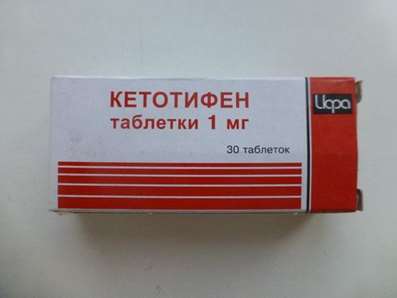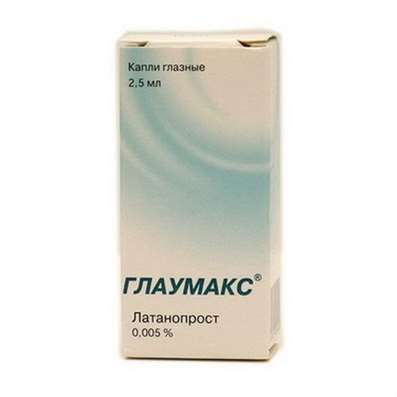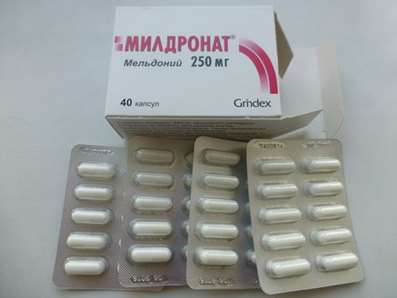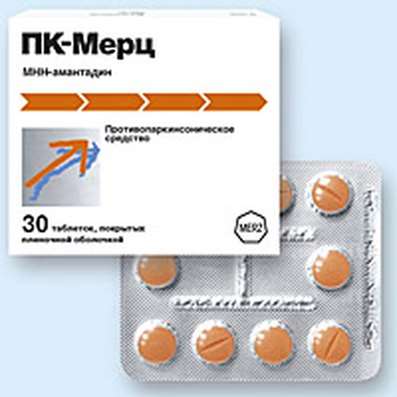Instruction for use: Biosulin R
I want this, give me price
ATX Code A10AB01 Insulin human
Active substance Insulin soluble [human biosynthetic]
Pharmacological group
Insulins
Nosological classification (ICD-10)Z31.1 Artificial insemination
E10 Insulin-dependent diabetes mellitus
Decompensation of carbohydrate metabolism, Diabetes mellitus, Diabetes insulin sugar, Diabetes mellitus type 1, Diabetic ketoacidosis, Insulin-dependent diabetes, Insulin-dependent diabetes mellitus, Coma hyperosmolar non-ketoacidotic, Labile form of diabetes mellitus, Violation of carbohydrate metabolism, Type 1 diabetes mellitus, Type I diabetes mellitus, Insulin-dependent diabetes mellitus, Type 1 diabetes mellitus
E11 Non-insulin-dependent diabetes mellitus
Acetonuric diabetes, Decompensation of carbohydrate metabolism, Diabetes insulin-independent sugar, Diabetes sugar type 2, Type 2 Diabetes, Non-insulin-dependent diabetes, Non-insulin dependent diabetes mellitus, Non-insulin-dependent diabetes mellitus, Insulin resistance, Insulin resistant diabetes mellitus, Coma lactobacillus diabetic, Violation of carbohydrate metabolism, Type 2 diabetes mellitus, Diabetes mellitus type II, Diabetes mellitus in adulthood, Diabetes mellitus in old age, Diabetes insulin-independent, Diabetes mellitus type 2, Sugar insulin-independent diabetes type II
Composition and form of release
Solution for injection 1 ml
Insulin soluble (human genetically engineered) 100 IU
Auxiliary substances: glycerol; Meta-cresol; water for injections
In bottles of 10 ml; In a pack of cardboard 1 bottle or in cartridges of 3 ml, in a planar cell pack of 5 pcs .; In a pack of cardboard 1 package.
Description of dosage form
Colorless or almost colorless, clear liquid.
Characteristic
Short-acting insulin.
pharmachologic effect
Pharmacological action - hypoglycemic.
Pharmacodynamics
It is a human insulin obtained using recombinant DNA technology.
Interacts with a specific receptor of the outer cytoplasmic cell membrane and forms an insulin-receptor complex that stimulates intracellular processes, incl. Synthesis of a number of key enzymes (hexokinase, pyruvate kinase, glycogen synthetase). Reduction of blood glucose is due to increased intracellular transport, increased absorption and assimilation by tissues, stimulation of lipogenesis, glycogenogenesis, a decrease in the rate of glucose production by the liver.
The duration of action of insulin preparations is mainly due to the rate of absorption, which depends on several factors (for example, the dose, method and site of administration), and therefore the profile of insulin activity is subject to significant fluctuations, both in different people and in the same person .
After sc administration, the beginning of the drug is observed after about 30 minutes, the maximum effect is in the interval between 2 and 4 hours, the duration of action is 6-8 hours.
Pharmacokinetics
Suction
Completeness of absorption and the beginning of the effect of insulin depends on the mode of administration (SC or IM) and the place of administration (abdomen, thigh, buttocks), the dose (volume of insulin administered), the concentration of insulin in the preparation.
Distribution
It is distributed unevenly in the tissues. It does not penetrate the placental barrier and is not excreted in breast milk.
Metabolism
It is destroyed by insulinase mainly in the liver and kidneys.
Excretion
T1 / 2 - a few minutes. It is excreted in the urine - 30-80%.
Biosulin R
Type 1 diabetes mellitus (insulin-dependent);
Type 2 diabetes mellitus (insulin-independent): the stage of resistance to oral hypoglycemic agents, partial resistance to these drugs (with combined therapy), intercurrent diseases;
Urgent conditions in patients with diabetes mellitus, accompanied by decompensation of carbohydrate metabolism.
Contraindications
Increased individual sensitivity to insulin or other components of the drug;
Hypoglycemia.
pregnancy and lactation
Data on the use of the drug during pregnancy and during breastfeeding are not provided.
Side effects
From the side of metabolism: hypoglycemic conditions (pallor of the skin, increased sweating, palpitation, tremor, hunger, agitation, paresthesia in the mouth, headache). Pronounced hypoglycemia can lead to the development of hypoglycemic coma.
Local reactions: hyperemia, swelling and itching at the injection site, with prolonged use - lipodystrophy at the injection site.
Allergic reactions: rarely - skin rash, angioedema; In isolated cases - anaphylactic shock.
Other: swelling, transient refractive disorders (usually at the beginning of therapy).
Interaction
There are a number of drugs that affect the need for insulin.
Hypoglycemic action of insulin enhances oral hypoglycemic drugs, MAO inhibitors, ACE inhibitors, carbonic anhydrase inhibitors, nonselective beta adrenoblockers, bromocriptine, octreotide, sulfonamides, anabolic steroids, tetracyclines, clofibrate, ketoconazole, mebendazole, pyridoxine, cyclophosphamide, fenfluramine, lithium preparations; Preparations containing ethanol.
Hypoglycemic action of insulin weakens oral contraceptives, GCS, thyroid hormones, thiazide diuretics, heparin, tricyclic antidepressants, sympathomimetics, danazol, clonidine, BCC, diazoxide, morphine, phenytoin, nicotine.
Under the influence of reserpine and salicylates, both weakening and enhancement of the action of the drug are possible.
Dosing and Administration
SCI, IM, intramuscularly, IV, intravenously, 30 minutes before meals or a light snack containing carbohydrates.
The dose of the drug is determined by the doctor individually, in each case based on the level of glucose in the blood.
On average, the daily dose is 0.5 to 1 IU (international unit) / kg body weight (depends on the individual characteristics of the patient and the level of glucose in the blood).
The temperature of the injected insulin should be at room temperature.
With monotherapy, the frequency of administration is 3 times a day (if necessary, 5-6 times a day). At a daily dose exceeding 0.6 IU / kg, it is necessary to inject 2 or more injections into different areas of the body.
Biosulin® R is usually injected subcutaneously (subcutaneously) into the anterior abdominal wall. Injections can also be done in the thigh, buttock, or the area of the deltoid muscle of the shoulder. It is necessary to change the injection site within the anatomical area to prevent the development of lipodystrophy.
In / m (intramuscular) and iv (intravenously) Biosulin® R can be administered only under the supervision of a physician.
Biosulin® R is a short-acting insulin and is usually used in combination with medium-duration insulin (Biosulin® H).
The technique of injection with the use of insulin in vials
If the patient uses only one type of insulin
1. The rubber membrane on the vial should be disinfected.
2. Draw in the syringe air in an amount corresponding to the required dose of insulin. Insert air into the vial with insulin.
3. Turn the bottle with the syringe upside down and collect the necessary dose of insulin in the syringe. Remove the needle from the vial and remove air from the syringe. Check the correctness of the dose of insulin.
4. Immediately make an injection.
If the patient needs to mix two types of insulin
1. The rubber membranes on the vials should be disinfected.
2. Directly before the set, take a bottle of long-acting insulin ("cloudy") between the palms until the insulin becomes evenly white and cloudy.
3. Draw in the syringe air in an amount corresponding to the dose of "cloudy" insulin. Introduce air into the vial with "cloudy" insulin and remove the needle from the vial ("muddy" insulin at this stage should not be typed yet).
4. Draw in the syringe air in an amount corresponding to a dose of insulin of short action ("transparent"). Introduce air into the bottle with "transparent" insulin. Turn the vial with the syringe upside down and collect the required dose of "transparent" insulin. Remove the needle and remove air from the syringe. Check the correctness of the dialed dose.
5. Insert the needle into the vial with "cloudy" insulin, turn the vial with the syringe upside down and collect the necessary dose of insulin. Remove air from the syringe and check the correctness of the dialed dose. Immediately make an injection of the dialed mixture of insulin.
6. The intake of insulin should always be in the same sequence described above.
Injection technique with insulin in cartridges
The cartridge with the preparation Biosulin® R is intended for use only with the syringe pen Biosulin Ren. The patient should be warned about the need to carefully follow the instructions in the instructions for use of the syringe pen for insulin administration.
Before use, make sure that there is no damage (for example, cracks) on the cartridge with Biosulin® R. Do not use the cartridge if there are any visible damage. After the cartridge is inserted into the syringe pen, a colored strip should be visible through the cartridge holder window.
After injection, the needle should remain under the skin for at least 6 seconds. Keep the button pressed until the needle is completely removed from under the skin, so The correct administration of the dose is ensured and the possibility of blood or lymph entry into the needle or the cartridge with insulin is limited.
The cartridge with the preparation Biosulin® R is intended only for individual use and can not be refilled.
Injection procedure
1. Two fingers should collect the skin fold, then insert the needle into the base of the fold at an angle of about 45 ° and insert under the skin insulin.
2. After the injection, the needle should remain under the skin for at least 6 seconds, in order to ensure that the insulin is injected completely.
3. If blood disappears after removing the needle at the injection site, it is necessary to press the injection site with your finger.
4. Injection sites should be changed.
Overdose
Symptoms: hypoglycemia may develop.
Treatment: mild hypoglycemia, the patient can eliminate himself by taking sugar or carbohydrate-rich foods inside. Therefore, patients with diabetes are encouraged to always carry sugar, sweet fruit juice or other sweets.
In severe cases, if the patient's consciousness is lost, a 40% dextrose solution is injected into the IV; In / m, p / to, in / in - glucagon. After restoration of consciousness the patient is recommended to take food rich in carbohydrates, to prevent the repeated development of hypoglycemia.
special instructions
Do not use Biosulin® R if the solution becomes cloudy, colored, or solids are detected.
Against the background of insulin therapy, it is necessary to constantly monitor the level of glucose in the blood.
The causes of hypoglycemia, in addition to an overdose of insulin, can be: drug substitution, skipping meals, vomiting, diarrhea, increased physical activity, diseases that reduce the need for insulin (liver and kidney dysfunction, hypofunction of the adrenal cortex, pituitary gland or thyroid gland) Injections, as well as interaction with other drugs.
Incorrect dosing regimens or breaks in the introduction of insulin, especially in patients with type 1 diabetes, can lead to hyperglycemia. Usually, the first symptoms of hyperglycemia develop gradually over a period of several hours or days (thirst, urination, nausea, vomiting, dizziness, redness and dryness of the skin, dry mouth, loss of appetite, acetone odor in the exhaled air). If not treated, hyperglycemia in type 1 diabetes can lead to the development of life-threatening diabetic ketoacidosis.
The dosage of the drug should be adjusted with significant physical exertion, infectious diseases, fever, thyroid disorders, Addison's disease, hypopituitarism, liver and / or kidney dysfunction, diabetes in people over 65 years of age, increased intensity of physical activity or a change in habitual diet.
Concomitant diseases (especially infectious diseases) and conditions accompanied by fever, increase the need for insulin.
The transition from one type of insulin to another should be carried out under the control of blood glucose.
The drug reduces tolerance to alcohol.
Due to the possibility of precipitation in some catheters, the use of the drug in insulin pumps is not recommended.
Influence on the ability to drive vehicles and manage mechanisms
In connection with the primary appointment of insulin, a change in its type or with significant physical or mental stressful effects on the body, it is possible to reduce the ability to drive a car or to manage various mechanisms, as well as engaging in other potentially dangerous activities requiring increased attention and speed of psychomotor reactions.
Storage conditions
In the dark place at a temperature of 2-8 ° C (do not freeze).
Keep out of the reach of children.
Shelf life
Solution for injection 40 IU / ml - 2 years. After opening, vials - 6 weeks, cartridges - 4 weeks at a temperature of 15-25 ° C.
Injection for 100 IU / ml - 2 years.
Do not use after the expiry date printed on the package.

 Cart
Cart





